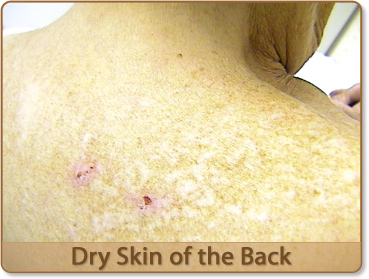 How do you know if you have dry skin?
How do you know if you have dry skin?
- Does your skin feel dry to touch?
- Does your skin look ashy? (silver, white flakiness that sits on the skin surface)
- Do you see white scratch marks on your skin?
- Do you have to lotion more than twice a day to keep moisturized?
If you answered “yes” to any of these questions, you may have dry skin.
- Dryness is a frequent finding in ethnic skin types particularly African- American and Afro-Carribean descendants
- It is a “normal” finding of aging skin. Affecting at least 75% of this age group thus making it the most common skin disorder in the elderly.
- Persons therefore 65 and older and of predisposed ancestry are most frequently affected by dry skin
- Dry skin in predisposed individuals usually affects the extremities more than the face because sebaceous or oil glands are less numerous in these areas.
- The scientific reason for dry skin is decreased moisture in the outer layer of skin because of increased water loss in the outer layers. The skin barrier has a decreased amount of fats.

Tips to avoid Dry Skin
- Avoid hot showers, using warm water
- Avoid showering more than once a day on a regular basis
- Avoid harsh/detergent soaps; instead use moisturizing soaps of a thick creamy consistency
- Some skin types which are sensitive should avoid products containing flowers, herb and fragrance
- Avoid prolonged skin exposure to chemicals such as chlorine
- Avoid prolonged skin exposure to heating devices, fireplaces
Care of Dry skin
- Use petrolatum based moisturizers
- Moisturize immediately after towel drying which helps the outer skin layer retain moisture.
- Reapply body lotion/moisturizer twice to three times per day
Treatments for Dry Skin-Emollients
- Petrolatum
- Ammonium lactate
- Urea
- Humectants- Hyaluronic-based body preparations

